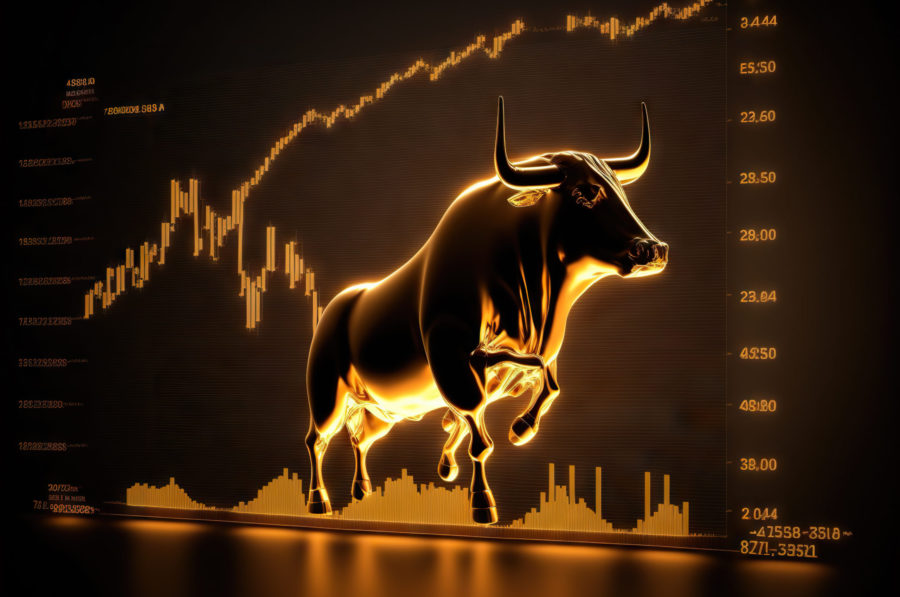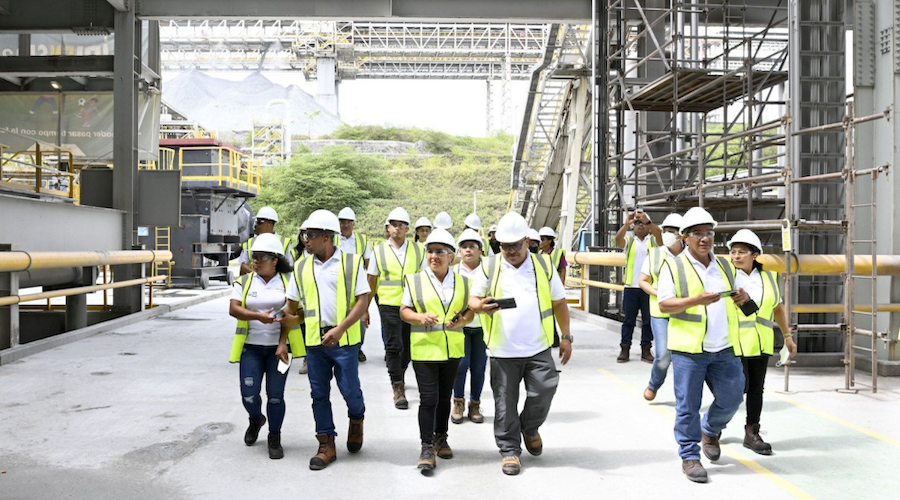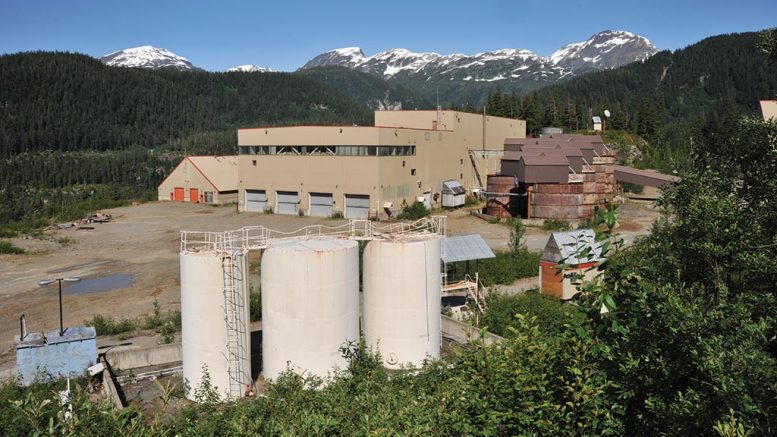Maximizing returns in an uncertain mining market: Tom Szabo
Tom Szabo, an investment strategist and principal of MetalAugmentor.com, invests in miners with base metal, specialty metal and rare earth element projects because the market isn’t quick to notice them—meaning it’s easy to get in early on a great project. His Peerless system helps to identify opportunities based on unique attributes. So, which metals and rare earth companies are set to strike in this volatile market? Szabo doles out tips in this Metals Report interview and explains why he likes companies that have yet to achieve market favor.
The Metals Report: As an investment strategist at MetalAugmentor.com, you use the Peerless system to rank equities in the mining space. What exactly is the Peerless system?
Tom Szabo: Our system is a qualitative ranking of companies. It’s a binary system: A company is either peerless or it’s not. However, we do have companies that we consider “candidates” for peerless. The Peerless system takes into account success factors. These success factors may be different based on the stage of development of the company. An exploration company’s success factors will be somewhat different from a producer, although they will share some similarities like management and corporate strategy.
TMR: What are some non-precious metal equities that are providing interesting opportunities in the current cycle?
TS: In base metals, we are more interested in the exploration or earlier-stage plays. One of the reasons is the market doesn’t tend to add a large premium to a non-precious metal discovery until the bigger players have had a chance to wrap their arms around the story. Often the proper valuation doesn’t appear until the project becomes an obvious candidate for being taken out. While the wait can sometimes be frustrating, it also allows astute investors to be positioned ahead of the crowd.
An example of a peerless company in this space would be North American Nickel Inc. (NAN:TSX.V). This is an exploration company that’s active in Greenland. It has made a potentially district-scale discovery of a magmatic nickel-copper-cobalt-platinum-group-metals system with some similarities to the Sudbury Basin in Ontario, Canada.
TMR: Is Greenland considered mining-friendly?
TS: It is. The population seems to be pretty pragmatic. Most people live in areas away from where the exploration and deposits are located.
TMR: They tend to be very protective of their glaciers and things like that, however.
TS: Yes, this is true. You don’t want to be around the areas where there are heavy glaciers. There are quite a few mining projects elsewhere, however. You can develop projects in Greenland if you approach it in the right way.
The area where North American Nickel is active along the southwest coast doesn’t have year-round snow. There are also huge areas elsewhere in Greenland that have not been explored because recent glacier melting has just exposed these areas, some of which could be world class.
TMR: What’s the next step for North American Nickel?
TS: It has found several areas of mineralized conduits, including the Imiak Hill complex. It encountered massive sulfides across decent intervals deeper in the system. Assays are confirming the high nickel grades that have been anticipated. It’s an encouraging development that’s accounted for a run-up in the share price.
TMR: You’ve suggested investors play North American Nickel through VMS Ventures Inc. (VMS:TSX.V), which owns a large stake of the company.
TS: VMS Ventures owns about 25% of North American Nickel. At this stage, the leverage isn’t that great, but if North American Nickel starts to run you’ll see the leverage start to work.
VMS also has the Reed Lake joint venture with HudBay Minerals Inc. (HBM:TSX; HBM:NYSE).
TMR: VMS bills itself as Manitoba’s next copper mine.
TS: It should be in full operation next year. VMS’s underlying price is more or less supported by the Reed Lake project. Anything that happens with North American Nickel is a bonus. It is a lower-risk, longer-term, value-oriented way of being exposed to a discovery story and a near-term production story at the same time.
TMR: Barclays reported in September that five of the six base metals in the London Metal Exchange are currently in surplus, but the bank remained more optimistic about the long-term prospects for base metals due to possible mine shutdowns in the near term. Are there some base metals you favor?
TS: Copper is king. I don’t suspect we’ll run out of copper deposits anytime soon, but we could run out of deposits that are inexpensive to mine. Deposits that have high grades or low cost profiles are attractive to me. Copper will continue to be big. China has really just started to electrify beyond the public transmission and transport infrastructure. India hasn’t really even started. Africa hasn’t started at all.
Zinc also comes to mind. There aren’t any huge zinc mines waiting to come on line. Most of the deposits that are larger have issues or are located in areas where development isn’t easy. The deposits that can be developed readily aren’t particularly big.
Nickel has some similarities to copper in terms of both supply and demand. Nickel sulfides tend to occur with copper. Nickel laterites are large but low-grade deposits similar to copper porphyries whereas magmatic systems containing nickel can be quite high grade as we are seeing with companies like North American Nickel. In any case, miners need a certain price in order to be profitable. A viable long-term operation also needs to be low cost and there are a few different opportunities out there among the various deposit types.
TMR: Do you have any other ideas on how to get exposure to copper?
TS: Atico Mining Corp. (ATY:TSX.V; ATCMF:OTCBB) in Colombia is almost like a “Fortuna Copper”: The principals are from Fortuna Silver Mines Inc. (FSM:NYSE; FVI:TSX; FVI:BVL; F4S:FSE). The strategy is similar. Atico is picking up a historical operation that has not seen modern mining applied to it.
TMR: It’s a small, high-grade story at this point. Is there reason to believe it gets bigger?
TS: What’s been explored here historically has been near the surface. But there hasn’t been a lot of modern exploration to find additional mineralized lenses at depth or along trend. Atico came along and it wasn’t too difficult for the company to find the next ore body.
It’s a growth story. Management has been focused on getting this up to a level where it can expand and self-sustain.
TMR: Do you have a zinc play that you’re following?
TS: Pure zinc deposits are virtually nonexistent. With zinc you usually end up with a polymetallic-type system. Pretty much all the silver producers are polymetallic. However, they don’t produce a large enough portion to be considered zinc plays.
If there were to be some kind of zinc mania in the future—and we actually sort of had one already when zinc went to $2/lb in 2006—I would perhaps look at Hecla Mining Co. (HL:NYSE). It is a peerless candidate and its Greens Creek project has a very significant zinc component. Hecla is not on our list now, but if it’s able to get its Idaho Lucky Friday operation stable, it will start to focus on growth opportunities elsewhere. The company has several projects it’s been looking at building up in the background.
Let’s go from a relatively large company to an extremely tiny one, Western Pacific Resources Corp. (WRP:TSX.V). It’s actually run by a couple of former Hecla big wigs. It started out with some gold projects in Nevada and Idaho. The company didn’t want to suffer from too much dilution in such a difficult financing environment, so it searched out a near-term production story. It found one at the Deer Trail Mine in Utah.
This was a project that was mismanaged by a previous company. It did have a significant amount of mining infrastructure installed, however. There is a bona fide deposit there. It’s not big at this point, but it has the potential for a similar style and scale of polymetallic replacement mineralization that’s found in a number of successful mines in Mexico. We should note that Western Pacific does have to raise money to finish refurbishing the mine and get into production.
TMR: What other non-precious or specialty minerals or metals should investors be paying attention to in the near term?
TS: There has been a lot of hype around the so-called rare earth elements (REEs) but they aren’t really that rare. There are lots of REE deposits, it’s just a matter of getting at them and processing them effectively. However, while they might not be geologically rare, there also may never be a substitute found for some of these substances.
Take, for example, neodymium and dysprosium, the REEs that are primarily used in high-strength magnets. In order for the technologies and industries that rely on magnets to grow, there will need to be more mine supply of these REEs. There’s opportunity for a new project developer to be that supplier but that doesn’t mean just mining at a low cost. It has to also be competitive with China on selling the specific products demanded by the market and that essentially means having access to a separation process that produces a high-purity REE material like the neodymium metal required for magnet alloys. In other words, the prospective REE mining company and its partners must cut China out of the loop. This is proving to be exceedingly difficult to accomplish, but someone will eventually figure out a way to do it.
The agricultural minerals phosphate and potash have a fundamental growth story: an increasing global population and less nutrient-rich arable land. In order to produce more food we will have to provide more and more nutrients artificially into the soil to keep up the yields. There are quite a few potash and phosphate deposits, but which have an advantage? Are some close to market, have better processing that makes it more attractive or some other aspect that creates an advantage beyond the size or economics?
One of the companies we like in this space is Allana Potash Corp. (AAA:TSX; ALLRF:OTCQX) in Ethiopia. The Dallol project is in a large evaporitic basin. One of its key advantages is that the hot desert allows the potash concentrate to be left in big salt ponds to dry out prior to shipping, significantly reducing capex and operating costs. Also, the project is close to roads, planned rail lines and the east coast of Africa. From there it’s a relatively short distance to India, Southeast Asia and China.
TMR: There’s been some turmoil in Ethiopia over the years. Is that a negative factor?
TS: The fact is that you’re probably not going to find too many stable jurisdictions in Africa, but you could do worse than Ethiopia. Generally speaking, I don’t consider instability to be an ongoing issue.
Funding could be an issue. Allana Potash will have to find someone who can look past the fact that the project is in a country that hasn’t historically seen big investments of this nature. More and more, that “someone” seems to be China although the company is working with a number of international groups as well.
TMR: Why is Allana a timely investment?
TS: The price driver is obtaining funding. That will remove a significant source of uncertainty and take the company to the next level. It is significant.
TMR: Any other specialty minerals or metals?
TS: Perhaps I should add to our previous discussion of REEs because many of the issues that apply there will also be important in other specialty sectors. For example, deposit size or ore grade are often not the most critical factors in these non-commodity mine products. Namibia Rare Earths Inc. (NRE:TSX, NMREF:OTCQX) doesn’t have a particularly large deposit, but the development timeline could potentially be short. It also has a very high percentage of valuable heavy rare earths, probably one of the highest in the world. At 0.5% to 1% grade the value of it is much more significant on a per-ton basis than most other deposits out there. Namibia’s project would not be a huge operation, but it could be a highly profitable one if it could join up with a partner that’s able to take the product further than just production of a mixed REE concentrate. There are a number of potential partners in the form of exploration and mining companies looking for innovative ways to move further up the REE production value chain. Two interesting ones we follow are GéoMégA Resources Inc. (GMA:TSX.V) andGreat Western Minerals Group Ltd. (GWG:TSX.V; GWMGF:OTCQX).
Similar to REEs, other specialty metal and mineral projects require a viable plan to add value beyond just producing an ore concentrate at competitive cost. Investors who cast their nets wide enough should be able to find several attractive candidates across the mining sector at any given time.
TMR: Are there companies that investors perhaps should sell?
TS: The list is too long! In general, it’s a good idea right now to sell companies with production predicated on high prices because it’s going to be very difficult for these companies to generate profits. It may also be difficult for them to raise necessary funds if they have significant debt. And of course companies that have run out of cash and don’t have any attractive assets are at risk of going dormant and missing out on the next upturn in the sector. Consequently, investors should also sell any exploration play without ready access to capital especially if that company doesn’t already have at least a significant sniff of a major discovery on its hands.
TMR: Do you think investors should stay out of the equities market until the U.S. government shutdown is resolved?
TS: It’s difficult to read how one event in isolation will impact equities. If you just focus on one thing, you could always find a reason not to be in equities. In fact, that “reason” to stay out can ultimately turn into a reason to be invested. If the federal shutdown is over next week, there could be a big relief rally back up before the next artificial crisis comes along.
Generally, however, equities are highly overvalued. I’m not talking about mining equities. I’m talking about general equities. There is a significant risk of another correction or crash in the general markets. I’ve also discussed elsewhere that there’s probably going to be a secondary bottom in gold and the other metals. Perhaps it’s a correction in general equities that precipitates it. There may not be a fundamental issue with gold or the mining sector. It could just be a drag-down effect from the general markets.
TMR: Do you have a timeframe for that second bottom?
TS: It doesn’t have to be a lower bottom than what we’ve already seen so we won’t know until after the fact. I believe it will be sooner than later. For example, some technical work that we use suggests that the earliest phase of a new multi-year rally may appear by next spring. Our other qualitative and quantitative work indicates a mining cycle peak in the next two to three years. That would suggest the bottom is not too far out because the market will need time for the rebuilding phase to undo all the technical damage. Then you get into the speculative blow-off stage of the rally, which itself could take 6 to 12 months.
TMR: Wow.
TS: What we’re looking for now is a classical bottom, which should have capitulation and other factors indicating that the last marginal seller has thrown in the towel. Capitulatory selling has been happening in fits and starts, but I don’t get the sense that it’s finished yet. I don’t mean to be pessimistic. It’s just part of the market cycle. I still think that there are good opportunities out there, but generically buying the mining sector is probably not a good idea—at least for the time being.
TMR: Thanks, Tom. It’s been a pleasure.
Tom Szabo is co-chief analyst of MetalAugmentor.com, an investment research service focused on metals and mining. Szabo has co-founded several precious metal related businesses and investment funds.
Find out how Tom Szabo applies his Peerless concept to precious metals in his interview with The Gold Report, The Peerless Way to Precious Metal Profits.
Want to read more Metals Report interviews like this? Sign up for our free e-newsletter, and you’ll learn when new articles have been published. To see a list of recent interviews with industry analysts and commentators, visit our
More News
{{ commodity.name }}
{{ post.title }}
{{ post.date }}




Comments